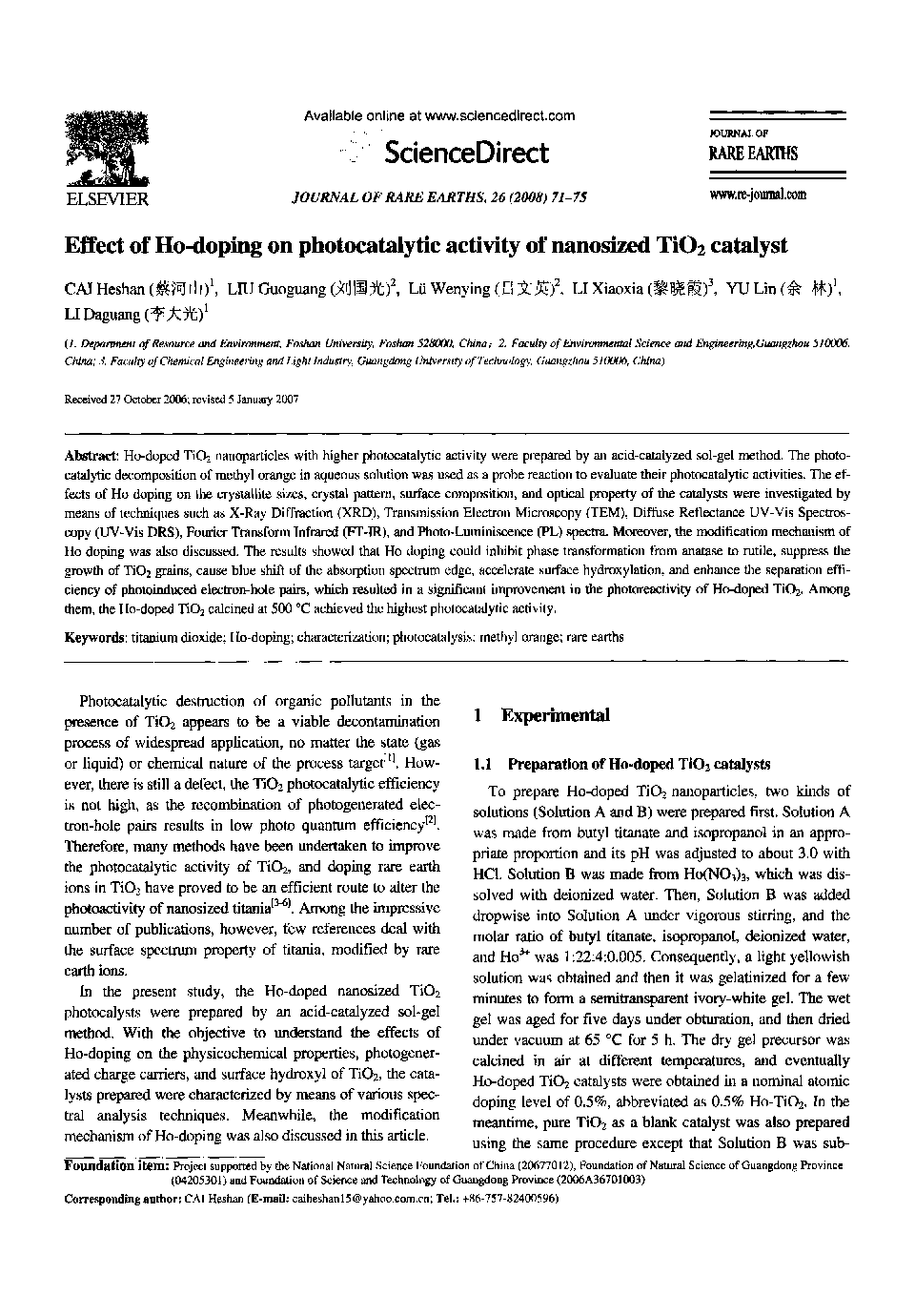| Article ID | Journal | Published Year | Pages | File Type |
|---|---|---|---|---|
| 1262322 | Journal of Rare Earths | 2008 | 5 Pages |
Ho-doped TiO2 nanoparticles with higher photocatalytic activity were prepared by an acid-catalyzed sol-gel method. The photocatalytic decomposition of methyl orange in aqueous solution was used as a probe reaction to evaluate their photocatalytic activities. The effects of Ho doping on the crystallite sizes, crystal pattern, surface composition, and optical property of the catalysts were investigated by means of techniques such as X-Ray Diffraction (XRD), Transmission Electron Microscopy (TEM), Diffuse Reflectance UV-Vis Spectroscopy (UV-Vis DRS), Fourier Transform Infrared (FT-IR), and Photo-Luminiscence (PL) spectra. Moreover, the modification mechanism of Ho doping was also discussed. The results showed that Ho doping could inhibit phase transformation from anatase to rutile, suppress the growth of TiO2 grains, cause blue shift of the absorption spectrum edge, accelerate surface hydroxylation, and enhance the separation efficiency of photoinduced electron-hole pairs, which resulted in a significant improvement in the photoreactivity of Ho-doped TiO2. Among them, the Ho-doped TiO2 calcined at 500°C achieved the highest photocatalytic activity.
